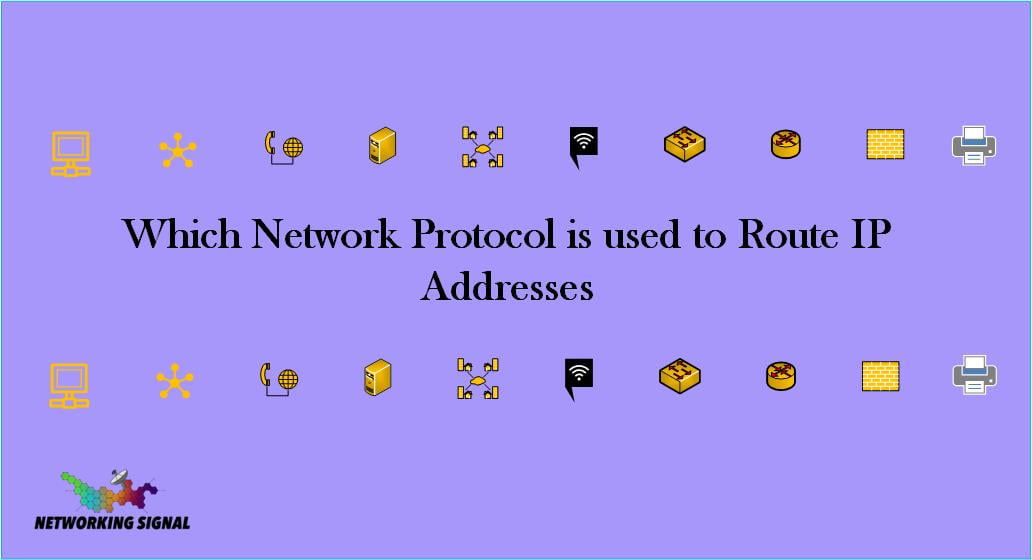Which Network Protocol is used to Route IP Addresses?
Border Gateway Protocol is used to route IP addresses. BGP is a routing protocol that’s designed to exchange routing and reachability information between autonomous systems (AS) on the Internet. AS are typically Internet service providers (ISPs), but they can also be enterprises that connect to the Internet.
BGP is the only exterior gateway protocol (EGP) in widespread use today. It’s a path-vector protocol, which means it maintains a list of AS numbers through which traffic must pass to reach a specific destination IP address. BGP uses this AS-path information to choose the best route for traffic.
Some Other Network Protocols are used to Route IP Addresses

Here are some other protocols which are used to route IP addresses:
Open Shortest Path First (OSPF)
OSPF is a link-state routing protocol, which means it uses information about the state of the network links to calculate the best route for traffic. OSPF is widely used in enterprise networks.
Routing Information Protocol (RIP)
RIP is a distance-vector routing protocol, which means it uses information about the distance to a destination to choose the best route for traffic. RIP is not as widely used as OSPF, but it’s still found in some small and home office (SOHO) networks.
Intermediate System to Intermediate System (IS-IS)
IS-IS is a link-state routing protocol that’s used mainly in large enterprise networks. It can also be used in service provider networks.
Enhanced Interior Gateway Routing Protocol (EIGRP)
EIGRP is a distance-vector routing protocol that’s proprietary to Cisco Systems. EIGRP is widely used in Cisco enterprise networks.
Static routing
Static routing is a manual process in which the administrator configures each router with information about the network. Static routes are often used in small networks or as backup routes in larger networks.
Default Routing
Default routing is a type of static routing that’s used when there’s no specific route information available for a destination. Default routes are often used in small networks or as backup routes in larger networks.
Policy Based Routing (PBR)
PBR is a type of static routing that allows the administrator to configure routes based on criteria other than a destination IP address. For example, PBR can be used to route traffic based on source IP address or protocol.
Multipath Routing Protocols
Multipath routing protocols are used to load balance traffic across multiple links. Multipath routing is often used in service provider networks.
HSRP: The Cisco Hot Standby Router Protocol (HSRP) is a proprietary protocol that’s used to establish a fault-tolerant default gateway. HSRP is supported on Cisco routers only.
NSRP: The Nortel Networks Succession Routing Protocol (NSRP) is a proprietary protocol that’s used to establish a fault-tolerant default gateway. NSRP is supported on Nortel routers only.
VRRP: The Virtual Router Redundancy Protocol (VRRP) is a standards-based protocol that’s used to establish a fault-tolerant default gateway. VRRP is supported by most major router vendors, including Cisco, Juniper, and Nokia.
GLBP: The Gateway Load Balancing Protocol (GLBP) is a Cisco proprietary protocol that’s used to load balance traffic across multiple default gateway devices. GLBP is supported on Cisco routers only.

